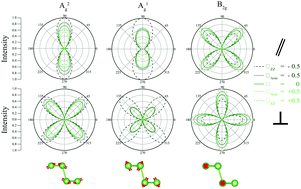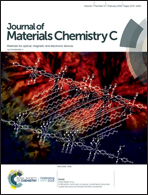Monitoring the crystal orientation of black-arsenic via vibrational spectra†
Abstract
In this study, the structural, mechanical, and vibrational properties of a recently discovered anisotropic ultra-thin material, black-arsenic (b-As), are investigated by using density functional theory. Direction dependent elastic constants such as in-plane stiffness, Young's modulus and Poisson's ratio of single-layer b-As are calculated and compared with those of the structural cousin black-phosphorus (b-P). The calculated Poisson's ratio of b-As for the zigzag direction is nearly 1, which is quite higher than that of b-P, 0.65. Besides, it is found that all the three elastic constants are highly anisotropic and their values in the zigzag direction are almost three times higher than that of the armchair direction. The mechanical strength of the material is also calculated and high-toughness is seen in both armchair and zigzag directions. It is revealed that the material is quite stiff against straining along the zigzag direction; in contrast, it is quite flexible along the armchair direction. Vibrational stability analysis shows that the material is stable up to 9% biaxially applied strain, and 12% and 45% uniaxially applied strain in the zigzag and armchair directions, respectively. Furthermore, the prominent Raman active peaks of the b-As structure show strong anisotropy in the strain dependent vibrational spectra and they can also be used for easy-determination of the crystal orientation of b-As from Raman measurements.

- This article is part of the themed collection: 2019 Journal of Materials Chemistry C HOT Papers


 Please wait while we load your content...
Please wait while we load your content...